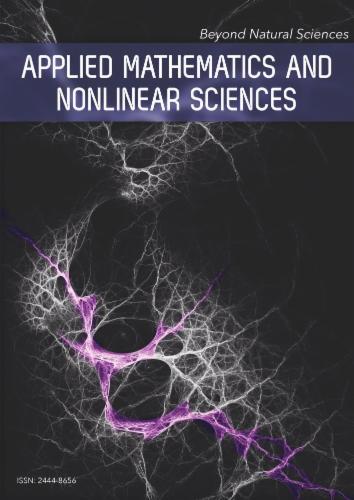Research on the Optimization Path of Data Mining Algorithms and Strategies for Mental Health Education in Colleges and Universities under the New Quality Productivity Framework
e
29 set 2025
INFORMAZIONI SU QUESTO ARTICOLO
Pubblicato online: 29 set 2025
Ricevuto: 26 gen 2025
Accettato: 02 mag 2025
DOI: https://doi.org/10.2478/amns-2025-1116
Parole chiave
© 2025 Xixi Chen et al., published by Sciendo
This work is licensed under the Creative Commons Attribution 4.0 International License.
Figure 1.

Figure 2.

Strong association rules for common psychological problems
| N | Cause item set | Result item set | Weighted support | Weighted confidence |
|---|---|---|---|---|
| 1 | {Compulsion, anxiety} | {Study pressure} | 0.1888 | 0.9036 |
| 2 | {Interpersonal tension and sensitivity} | {maladaptation} | 0.1208 | 0.8977 |
| 3 | {Anxiety, depression} | {Study pressure} | 0.0661 | 0.8548 |
| 4 | {Interpersonal tension, sensitivity, maladjustment} | {Study pressure} | 0.0916 | 0.8151 |
| 5 | {Interpersonal tension and sensitivity} | {Study pressure} | 0.0586 | 0.8105 |
| 6 | {Interpersonal tension and sensitivity} | {Study pressure} | 0.1124 | 0.8084 |
| 7 | {depression} | {Study pressure} | 0.0975 | 0.7946 |
| 8 | {maladjustment, depression} | {Study pressure} | 0.0652 | 0.7806 |
| 9 | {anxious, hostile} | {force} | 0.0964 | 0.7454 |
| 10 | {compulsion, paranoia} | {somatization} | 0.0134 | 0.7185 |
| 11 | {compulsion, interpersonal tension and sensitivity} | {somatization} | 0.0912 | 0.6509 |
| 12 | {Anxiety, depression} | {force} | 0.2505 | 0.6378 |
| 13 | {compulsion, paranoia} | {Interpersonal tension and sensitivity} | 0.3138 | 0.5958 |
| 14 | {Terror, interpersonal tension sensitive} | {depression} | 0.1626 | 0.5888 |
Common psychological problem expression variables
| Variable name | Variable code |
|---|---|
| Interpersonal tension and sensitivity | A1 |
| Feeling of learning pressure | A2 |
| Depression | A3 |
| Poor adjustment to school life | A4 |
| Anxiety | A5 |
| Force | A6 |
| Bigoted | A7 |
| Antagonism | A8 |
| Horror | A9 |
Partial association rules between psychological problems and maladjustment
| N | Cause item set | Result item set | Weighted support | Weighted confidence |
|---|---|---|---|---|
| 1 | {Rural, low income} | YES | 0.4708 | 0.6806 |
| 2 | {Rural, only child} | YES | 0.1676 | 0.5459 |
| 3 | {Town, only child} | YES | 0.0946 | 0.4678 |
| 4 | {Single parent family, low income} | YES | 0.2408 | 0.4229 |
| 5 | {Rural, high income} | YES | 0.5176 | 0.7184 |
| 6 | {Sleep quality is high} | YES | 0.2598 | 0.4686 |
| 7 | {Have Internet addiction} | YES | 0.1877 | 0.6027 |
| 8 | {Non-single parent families, large and medium-sized cities} | YES | 0.1604 | 0.4486 |
| 9 | {High income} | YES | 0.2355 | 0.5903 |
Partial association rules between psychological problems and learning stress
| N | Cause item set | Result item set | Weighted support | Weighted confidence |
|---|---|---|---|---|
| 1 | {Low income, student cadres} | YES | 0.1939 | 0.6486 |
| 2 | {High income} | YES | 0.0644 | 0.5408 |
| 3 | {High income, rural} | NO | 0.1846 | 0.4916 |
| 4 | {Single parent families, large and medium-sized cities} | YES | 0.3755 | 0.6909 |
| 5 | {Non-single parent families, large and medium-sized cities} | YES | 0.1358 | 0.2688 |
| 6 | {Non-student cadres, town} | NO | 0.1646 | 0.3759 |
| 7 | {Sleep quality is high} | YES | 0.0956 | 0.4409 |
| 8 | {In good health} | NO | 0.1626 | 0.3777 |
| 9 | {Not Only child, not single parent Family} | YES | 0.0858 | 0.4178 |
Frequent item set of common psychological problems
| N | Support degree | Item set |
|---|---|---|
| 1 | 0.715 | {Study pressure} |
| 2 | 0.626 | {force} |
| 3 | 0.384 | {anxiety} |
| 4 | 0.207 | {Interpersonal tension and sensitivity} |
| 5 | 0.126 | {depression} |
| 6 | 0.119 | {paranoid} |
| 7 | 0.105 | {hostile} |
| 8 | 0.103 | {maladaptation} |
| 9 | 0.101 | {Learning pressure, compulsion} |
| 10 | 0.089 | {Study pressure, interpersonal tension sensitivity} |
| 11 | 0.086 | {Depression, maladjustment} |
| 12 | 0.076 | {Study stress, depression} |
| 13 | 0.075 | {Learning pressure, maladjustment, interpersonal tension sensitivity} |
| 14 | 0.072 | {horror} |
